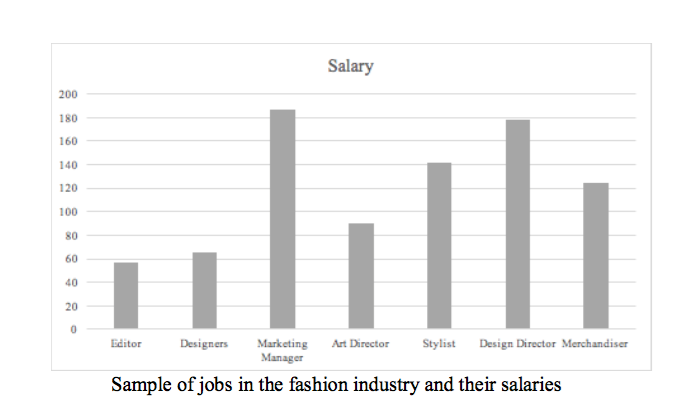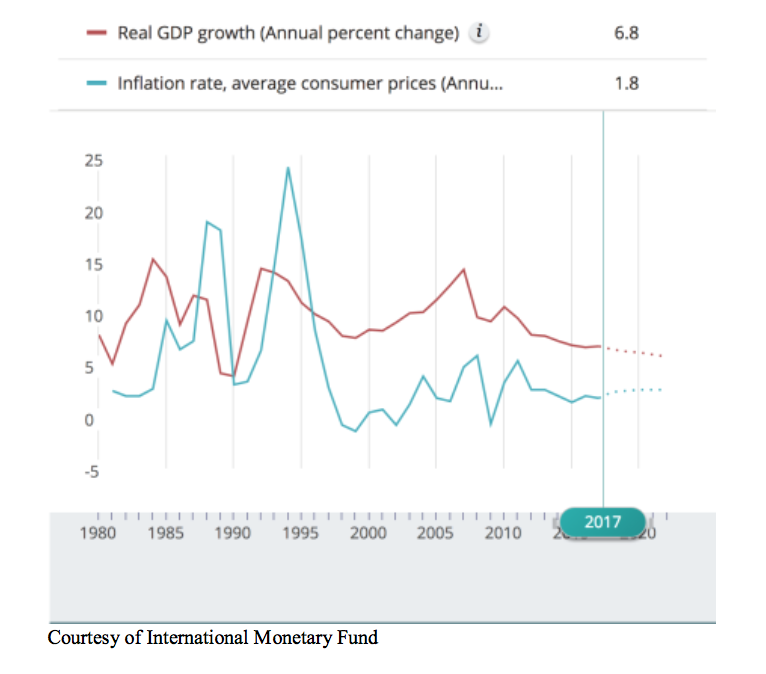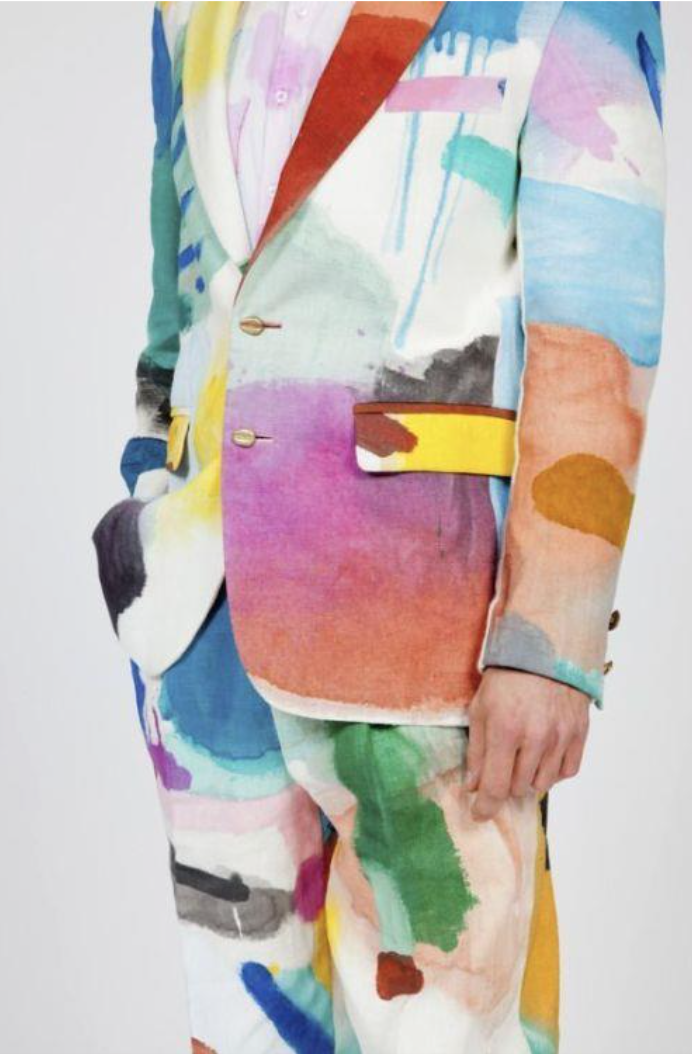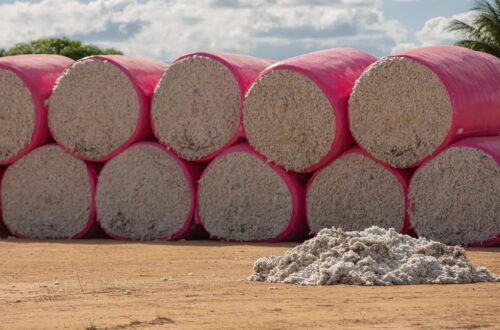Nowadays it is undeniable that even a consumer who is completely indifferent to the fashion industry will be affected by it. An industry that is projected to reach a staggering $2.4 trillion in total value, is an industry that affects many. If the industry were to be ranked alongside with the size of other countries’ economies, we would see that it would be placed as the seventh biggest economy in the world. However, with sizable industries come many factors that influence it. This paper’s focus will be to provide an extensive look at the factors that affect the fashion industry. We will explore economic and market factors, of which we will look more in-depth volatility in the industry and the impact of technology in the industry. We will start with employment, then we will move onto wage and technologies, and we will conclude with volatility.
To understand employment, we will look at key figures from of the most important fashion hubs, therefore we will look at figures from The United States, The United Kingdom, France, Italy, and Germany. Starting off with the United States, we can see that its overall labor force is of 161 million, of which 1.8 million are fashion related jobs (Bureau Labor of Statistics). If we take a deeper look into these 1.8 million jobs, we see that out this 185,000 are located just in New York City (FashionUnited). For the United Kingdom, we see an overall labor force of 33 million and out of that overall labor force 555,000 (Ons) work in the fashion industry. Germany with an overall labor force of 42 million has 340,000 (Destatis) working in the fashion industry. France, instead, has a labor force of 30 million of which 340,000 (Insee) are jobs in the fashion industry. For Italy, the labor consists of 22.76 million out of which 402,000 are jobs in the fashion industry (Istat). We see then that Italy, with a proportion of 1,8%, have the highest proportion of people working in the fashion industry; followed by the U.K with 1,7% and the U.S with 1,1%.
Moving on to wages in the fashion industry, we will analyze the wages of the most common jobs in the industry in the United States. We will start off with salary of a fashion editor, the average salary for a fashion editor is around 57,210$ (Bureau Labor of Statistics). If we look at fashion designers their median pay will be about 65,170$, while for art directors it will be about 89,820$. If we are instead looking at a marketing manager, we are looking at median salary of about 187,200$ (Bureau Labor of Statistics). When compared to the mean income of 27,924$, we can see that most fashion related jobs are well above the mean providing their workers with high wages (Bureau labor of Statistics). In other countries, these wages vary a lot, and due lack of transparency of data it is difficult to collect accurate information on the variation of wages between the different fashion hubs.

After taking a closer look to the employment and the wages of the industry, we can finally connect it to why they are important economic forces that affect the performance of the fashion industry. Employment in the fashion industry is only a small percentage of the total labor force, and it is important to understand why that is the case. This is the case due to the fact that the fashion industry is a highly specialized industry, and in order to attract specialized workers the industry needs high wages, which is exactly what we see through the data. These are considered forces due to the fact that as time goes on and the industry become increasingly even more specialized wages will be a force to attract new workers, which in turn will change employment.
Moving onto technology, we see that its impact on the fashion industry has contributed to the increase in customer requirements through a dramatic rise in the instantaneous knowledge of new trends and brands. Additionally, it has improved the capability of retailers, wholesalers and manufacturers to share data and make better business decisions. Out of this came two important advances: (i) Automatic replenishment, allowing manufacturers to automatically ship goods when inventory falls below agreed upon thresholds and (ii) the Value Chain Initiative (VCI), where standardized codes for products have been developed throughout the industry (Nenni, Giustiniano, Pirolo, 2013). According to the joint report of Business of Fashion and McKinsey, progress like these are what is going to make investment in technology in the future increase. Additional reasons for why investment in technology will increase have to do with market trends, such as: cyclical acceleration, omnichannel, localization, and sustainability; but will also have to do with the fact that future technology is going to solve further problems with sourcing and supplying.
Yet another important trend of technology in the fashion industry, is digitized inventory management and predictive analytics. These two relatively new trends, have the potential to link products to consumers that are in opposites sides of the world (McKinsey and BoF). However, they also have downside of decreasing creativity in the industry which in the future may create saturation of certain products and models. Essentially what we can take from technology being a force is that increases the growth of the fashion industry at a faster pace.
The fashion industry is an industry that easily gets affected by external shock waves, but it is also an industry that gets drastically affected by the shocks that it creates on its own, this creates volatility. First, we will analyze the external shocks that cause volatility, then we will move on to the shocks created by the industry itself and how they create volatility, we will then conclude by understanding why volatility is a force that moves the fashion.
External shocks that cause the fashion industry to react include: the threat of terrorist attacks, the slowdown of China’s economic activity, and the geopolitical instability caused by Brexit, in between many others. The terroristic attacks are an example of how instability can affect the value chain for the Fashion industry; this is caused not only by the physical threat of having sourcing regions attacked, but also by the fact that the fears of terroristic attacks can actually keep consumers of certain areas or cities in its entirety. Additionally, the slowdown of China’s economic activity is a source of fear for CEOs. This is due to the fact that China’s economic growth has been a key factor for the growth of the fashion industry, but why? Because even though consumption among Chinese consumers is nearly not as high as an American consumer (International Monetary Fund), “Chinese consumers are becoming more selective about their spending, allocating more of their income to lifestyle services and experiences, and trading up from mass products to premium products.” (McKinsey & BoF). This means that if economic growth in China is slowing down it could potentially put in risk one of the key factors of growth in the fashion industry.

Moreover, like any geopolitical instability, Brexit causes CEOs of fashion brands to be wary about their investment in the U.K, however the impact of Brexit on the fashion industry is still mere speculation. It’s important to remember that fashion purchases are often emotional ones, and if consumers are feeling uncertain or scared, they are less likely to buy. Many fashion players are working to develop the agility they need to respond to short-term changes, such as abrupt drops in demand that occur when consumers stay away.
In contrary, internal shocks created by the industry itself come from a position of competition among companies in the industry. These internal shocks can be anything from faster fashion cycles to partial commoditization of the fashion market, and the compliance with sustainability issues. But why does this cause volatility? It causes volatility due to the fact that demand can fluctuate wildly in response to these shocks, while shocks to the cost base, such as the impact of plummeting exchange rates on sourcing costs, are a constant threat. As a result, the value of fashion companies varies much more than for the market overall.
To conclude, the fashion industry is an industry that is highly responsive, highly dynamic, and highly volatile, so in order to understand the forces that move the growth of the industry it is important to understand the overall industry. In this essay, we analyzed economic and market factors that affect the fashion industry. We analyzed employment and wage, which go hand in hand, and we saw that these two factors feed off of each other and attract talent which affects the performance of each company. Additionally, we saw how technology affects the fashion industry to decrease costs and increase efficiency and communication between companies. Finally, we saw why volatility is a force, and why the industry is more volatile than most industries. Although volatility is one of the main characteristics of the fashion industry itself, it is volatility that fuels creativity and that pushes companies to take risks and make the industry we know and appreciate today.
By Rafaela Laurentino






